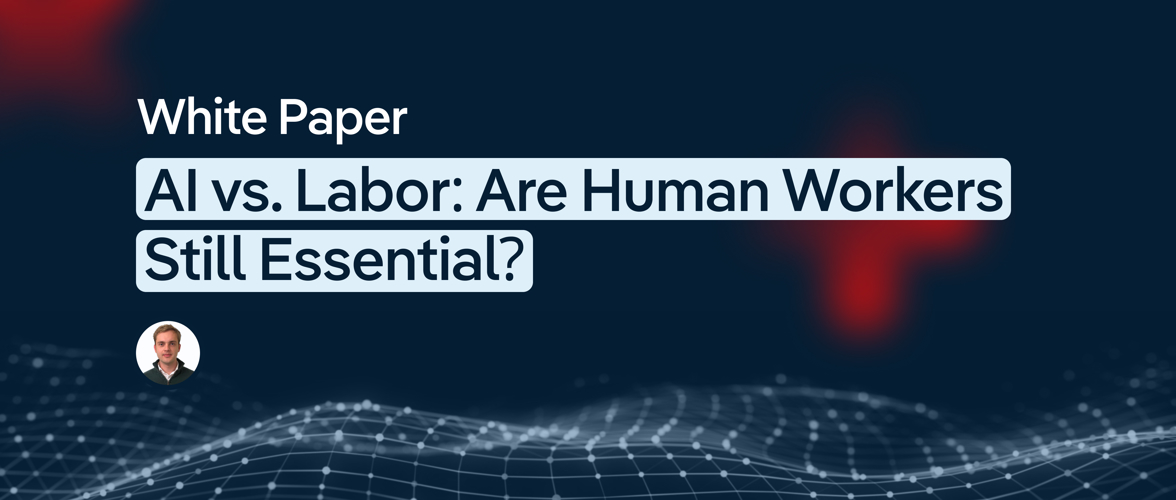Key Takeaways
- High-ROI sectors like renewable energy, fintech, healthcare and advanced manufacturing will drive significant returns in 2025.
- AI, automation, cybersecurity and cloud computing are essential tech investments to improve efficiency and risk management.
- Upskilling talent, adopting hybrid work models and leveraging data-driven decision-making are key to sustainable growth.
In 2025, businesses face a complex investment environment shaped by economic uncertainty, rapid technological advancements and shifting consumer demands. To drive long-term value, companies must move beyond cost-cutting and focus on strategic capital allocation in high-growth sectors, emerging technologies and workforce development. From AI-driven automation and fintech innovations to renewable energy and biotech breakthroughs, organizations that embrace data-driven decision-making can gain a competitive edge. Exploring the highest ROI investment strategies can help executives navigate evolving market conditions and position their businesses for sustained growth and resilience in an unpredictable global economy.
Key economic forces driving investment strategies
Macroeconomic factors like interest rate trends are reshaping access to capital, while inflationary pressures disrupt pricing strategies and supply chains. Market volatility and global trade disruptions are driving companies to refine their investment approaches, balancing risk and opportunity. Meanwhile, evolving consumer and business demands are accelerating the adoption of digital technologies and AI, transforming industries with greater efficiency and innovation. Sustainability and ESG initiatives are emerging as powerful competitive differentiators, influencing corporate strategies and investor decisions. Additionally, disruptive business models—such as subscription services and decentralized platforms—are redefining market engagement, creating new pathways for growth and resilience.
Where to invest now: Sectors with the highest ROI
Renewable energy & sustainability
Investments in solar, wind and battery storage are driving the green energy transition, with companies benefiting from lower costs and improved efficiency. The global renewable energy market, valued at approximately $1.1 trillion in 2023, is expected to grow at a compound annual growth rate (CAGR) of 8.5% through 2033. The decline in solar panel prices, which have fallen nearly 90% over the past decade, and advancements in wind turbine technology have made renewable energy more competitive, while large-scale battery storage solutions, like Tesla’s Megapack, enhance grid stability and reliability.
Businesses are also capitalizing on ESG strategies and government incentives like the U.S. Inflation Reduction Act and EU’s Green Deal, which provide tax credits and funding for sustainability initiatives. Carbon credit markets offer new revenue streams, with companies like Microsoft investing in carbon offset projects.

Industries prioritizing green investments, such as electric vehicles and sustainable packaging, are seeing strong returns as consumer demand shifts toward eco-friendly products. Companies like Walmart and Unilever are integrating renewable energy to cut costs and attract environmentally conscious consumers.
With evolving regulations and growing investor interest in sustainability, businesses investing in clean energy and carbon reduction strategies will drive long-term profitability and enhance market resilience in a green economy.
Healthcare & biotech
Biotech innovations, including precision medicine, are driving healthcare sector growth. Investment in biotech ventures surged 22% year-over-year in 2024, reaching $95 billion globally, underscored by advancements in gene editing and personalized medicine. The precision medicine market alone is forecasted to reach $140 billion by 2028, driven by technologies like CRISPR and AI-driven diagnostics platforms that enhance disease detection and treatment personalization.
With an aging population and rising demand for personalized healthcare, biotech firms specializing in genetic research and AI-assisted diagnostics are attracting strong investor interest. Companies such as Illumina and Moderna are pioneering advancements in genome sequencing and mRNA technology, fueling medical breakthroughs. Illumina, a leader in life sciences, projects the sequencing market opportunity to exceed $120 billion by 2027. AI-powered tools, like IBM Watson Health, help physicians make faster, more accurate diagnoses. These advancements improve patient care and enhance efficiency, reducing hospital readmission rates and overall healthcare costs. As regulatory agencies accelerate approvals for groundbreaking treatments, biotech remains a top sector for long-term investment and medical innovation.
Advanced manufacturing & supply chain tech
Smart factories leveraging IoT, AI and robotics are transforming manufacturing by enhancing efficiency, reducing waste and optimizing production. The global smart manufacturing market, valued at $277 billion in 2023, is projected to grow at a CAGR of 13.5% through 2032, reflecting the increasing adoption of automation and AI-driven logistics. Predictive AI-powered maintenance minimizes downtime, while automated quality control improves precision and reduces defects. Supply chain diversification strategies are mitigating geopolitical risks as companies shift production closer to key markets. Additive manufacturing (3D printing) lowers costs and lead times by enabling on-demand production and reducing material waste.

Increased automation and AI integration are streamlining production, reducing reliance on human labor and improving efficiency. Collaborative robots (cobots) are expected to drive a $9 billion market by 2028, enhancing productivity and lowering operational costs. AI-driven demand forecasting helps optimize inventory management, and as supply chains evolve in response to global disruptions, firms investing in smart logistics, blockchain tracking, and digital twins will gain a competitive edge through increased transparency and real-time decision-making. These innovations make manufacturing more agile, cost-effective and resilient in a rapidly changing global market.
Fintech & digital payments
The rise of embedded finance, digital wallets and decentralized finance (DeFi) is transforming the financial landscape, making transactions faster, more seamless and accessible across industries. The global fintech market, worth $340 billion in 2024, is expected to surpass $1126 billion by 2032, reflecting a CAGR of 16.2%. AI-driven risk management and fraud prevention are becoming essential as cyber threats evolve, ensuring safer transactions for businesses and consumers. E-commerce and B2B payment solutions drive digital transactions, enabling companies to streamline operations and improve cashflow.
As businesses and consumers increasingly shift toward cashless transactions, companies investing in digital payment infrastructure, blockchain technology and contactless solutions are well-positioned for long-term growth. AI-powered financial services enhance credit underwriting, optimize transaction security and improve fraud detection, strengthening market confidence in fintech solutions. Also, the rise of real-time payments and cross-border digital transactions accelerates financial inclusivity, allowing businesses to expand into new markets more efficiently. These advancements are reshaping the financial ecosystem, pushing companies to innovate and adopt cutting-edge digital payment strategies to remain competitive.
Key executive considerations: How to capitalize on high-ROI sectors
- Strengthen risk management: With geopolitical shifts and regulatory changes affecting key sectors, proactive risk assessment and scenario planning can mitigate potential disruptions. Diversifying supply chains and investing in cybersecurity are crucial.
- Expand market reach: Whether through partnerships, acquisitions, or digital expansion, targeting high-growth markets can unlock new revenue streams. Companies investing in global fintech solutions, renewable energy markets, and biotech advancements should consider international growth strategies.
- Capitalize on government incentives: Stay informed about regulatory changes, tax credits, and funding opportunities that can enhance profitability. Programs like the Inflation Reduction Act and the EU Green Deal offer strategic advantages to early movers in sustainability.
Harnessing technological advancements for strategic growth
As technology continues to advance, strategic investments in key areas such as AI, cybersecurity, and cloud computing are transforming industries across the board. Businesses that prioritize these innovations are better equipped to streamline operations, enhance customer experiences, and maintain a competitive edge in a rapidly changing market. From AI-driven automation and predictive analytics to robust cybersecurity measures and scalable cloud solutions, these technologies are driving efficiency, improving decision-making, and shaping the future of business. The global digital transformation market is projected to surpass $2.8 trillion by 2025, underscoring the increasing reliance on technology to drive efficiency and profitability. Strategic investments now will position companies to lead in the digital economy.
AI & automation
AI-driven decision-making revolutionizes finance, HR and marketing by enabling businesses to make precise, data-informed choices. Generative AI is transforming content creation, customer service and product development, allowing for scalable personalized interactions and enhanced engagement. Automation is optimizing operations, decreasing human error and lowering labor costs. By 2030, AI is expected to contribute $15.7 trillion to the global economy, surpassing the current combined output of China and India.
Companies using AI for predictive analytics, demand forecasting and process automation are experiencing significant returns on investment because of quicker response times and more efficient resource allocation. The global AI market, valued at $279 billion in 2024, is expected to grow at a CAGR of 36.6% through 2030, with industries like healthcare, finance, and retail leading adoption. AI-powered chatbots and automated support enhance customer experiences with real-time solutions, boosting brand loyalty. Personalized AI-driven recommendations also increase conversion rates by tailoring content and product suggestions based on individual consumer behavior. As AI adoption grows, businesses integrating these technologies will gain a competitive edge in efficiency, innovation and customer engagement.

Cybersecurity & data privacy
Rising cyber threats are increasing cybersecurity investments as businesses confront increasing risks from ransomware, phishing attacks and data breaches. Global cybercrime costs are expected to reach $10.5 trillion annually by 2025, up from $3 trillion in 2015, making cybersecurity a top priority for enterprises worldwide. As data privacy regulations like GDPR and CCPA gain importance, organizations must ensure compliance while safeguarding sensitive information. AI-powered cybersecurity tools are crucial in enhancing threat detection and response, enabling companies to identify vulnerabilities and react to attacks in real-time.
The sophistication of cyberattacks, including deepfake fraud and AI-generated phishing schemes, drives the adoption of next-generation security solutions such as behavioral analytics, zero-trust architectures and decentralized identity management systems. The global cybersecurity market is expected to grow from $188 billion in 2023 to $262 billion by 2026, fueled by corporate demand for advanced threat prevention measures. As cybercriminals leverage AI for more advanced attacks, companies must counter with automated security protocols, encrypted cloud solutions and adaptive risk management strategies. Organizations prioritizing cyber resilience mitigate financial and reputational risks and boost consumer trust and regulatory compliance, positioning themselves for sustainable growth in an increasingly digital world.
Cloud & edge computing
Hybrid cloud adoption drives scalability, cost efficiency and enhanced security, enabling businesses to balance on-premise and cloud-based infrastructure for optimal performance. At the same time, edge computing minimizes latency for real-time applications in manufacturing, healthcare and IoT sectors, boosting operational efficiency and decision-making. By 2025, over 75% of enterprise data is expected to be processed at the edge, up from 10% in 2018, reflecting the rapid decentralization of data management.

With the surge in data generation, businesses are embracing hybrid and multi-cloud strategies to optimize workload distribution and cut costs. The global cloud computing market was estimated to be $752 billion in 2024 and projected to expand at a CAGR of 20.4% through the end of 2030, as enterprises shift to more flexible, secure, and scalable infrastructure solutions. Edge computing revolutionizes industries by enabling localized data processing, which is crucial for autonomous vehicles, smart cities and health monitoring. The edge computing market alone is projected to reach $111 billion by 2028, driven by increasing adoption in telecommunications, healthcare, and industrial automation. Companies using AI-driven analytics in cloud and edge environments gain a competitive advantage, making operations more agile and responsive to market needs.
Key executive considerations: Leveraging technology for high-ROI growth
- Focus on innovation & continuous improvement: Drive long-term success by fostering a culture of innovation and continuous learning. Invest in R&D and stay ahead of technological trends to maintain competitiveness in rapidly evolving sectors. Companies that prioritize innovation are better equipped to capitalize on emerging opportunities and outperform rivals.
- Strengthen operational efficiency: Implement AI and automation to streamline operations, reduce labor costs, and improve overall efficiency. Automation technologies can optimize supply chains, enhance customer service, and improve production processes, positioning companies for faster growth and better resource management.
- Stay ahead with predictive analytics: Leverage AI-driven analytics for better forecasting and decision-making. Predictive analytics can uncover trends and optimize business strategies, helping companies anticipate market shifts and consumer demands, thus gaining a competitive advantage.
Investing in the workforce for long-term growth
As industries evolve and technological advancements reshape the job market, businesses are recognizing the critical importance of investing in their workforce. Strategic investments in upskilling, hybrid work models, and talent acquisition are essential for long-term success. By equipping employees with the necessary skills, fostering flexibility, and offering competitive benefits, companies can stay ahead of the curve and build a resilient workforce capable of navigating future challenges. These efforts not only enhance productivity but also help retain top talent in an increasingly competitive environment.
Upskilling & reskilling initiatives
Demand for data science, AI and cloud computing skills is surging as businesses boost their digital transformation efforts. To tackle workforce gaps, companies are investing in specialized training programs for areas like cybersecurity, supply chain management and sustainability, helping employees stay competitive in a rapidly evolving job market.

To expand access to upskilling, partnerships with universities, coding boot camps and online education platforms are providing professionals with certifications and hands-on experience in high-demand fields. Organizations are also using internal learning initiatives and AI-driven training platforms to customize skill development for individual employees, enhancing retention and fostering long-term business growth.
Key executive consideration: Have you identified critical future skill gaps aligned with your strategic growth areas, and are your current investments adequately addressing these gaps?
Hybrid work & digital collaboration
The evolution of remote and hybrid work models has led companies to invest in advanced technologies like VR meetings, AI-driven task management and digital collaboration tools to boost connectivity and efficiency. These innovations help bridge the gap between remote and in-office teams, ensuring seamless communication and workflow integration.
To maintain productivity and engagement, businesses are embracing flexible scheduling, performance-tracking software and virtual wellness programs that support work-life balance. Also, AI-powered analytics offer insights into employee satisfaction and workload distribution, enabling managers to optimize team performance while fostering a more inclusive and adaptive work culture.
Key executive consideration: Are your current hybrid infrastructure investments sufficient to maintain long-term productivity and employee satisfaction?
Talent acquisition & retention
As competition for top talent in high-growth industries intensifies, businesses are prioritizing well-being programs, mental health support and flexible work arrangements to boost retention. Comprehensive benefits packages, career development opportunities and mentorship programs are key differentiators in attracting skilled professionals.
Performance-based incentives, equity compensation and profit-sharing models are shaping workforce strategies and aligning employee goals with company success. Organizations are also using AI-driven workforce analytics to tailor retention strategies, ensuring they stay competitive in the contemporary labor market.
Key executive consideration: How do your retention and benefits strategies stack up against top industry benchmarks, and where can additional strategic investments close existing gaps?
Final Word
In 2025, smart capital allocation requires a strategic mix of technology investments, workforce development and industry-specific growth initiatives. Executives should focus on high-growth sectors like renewable energy, fintech and healthcare while leveraging AI-driven insights to improve decision-making. Also, fostering agility in operations and financial planning will be essential for navigating economic volatility and evolving market conditions, ensuring long-term resilience and sustained competitive advantage.









